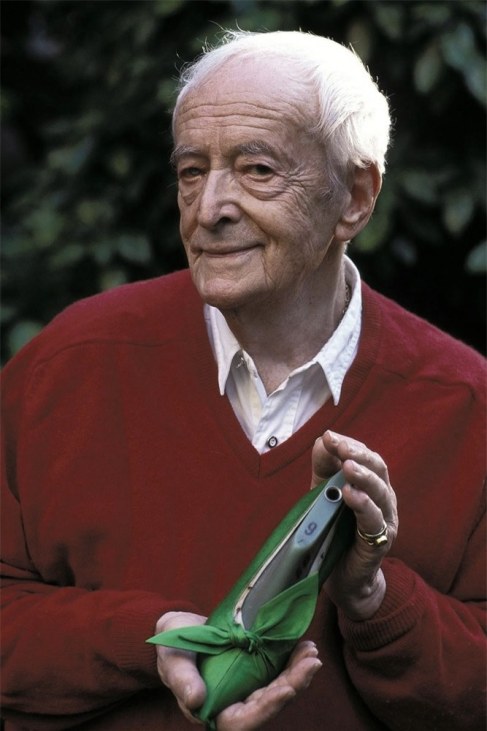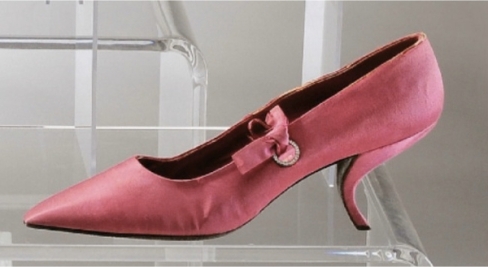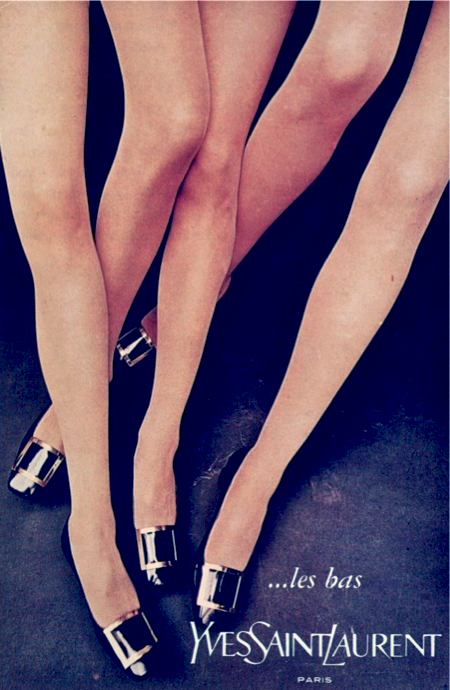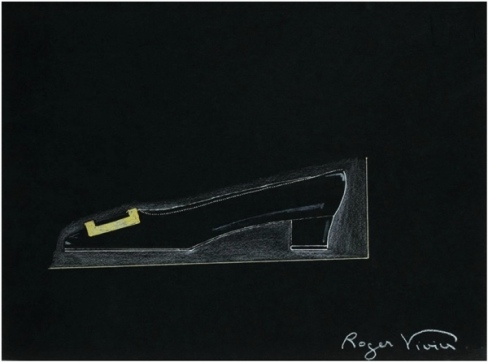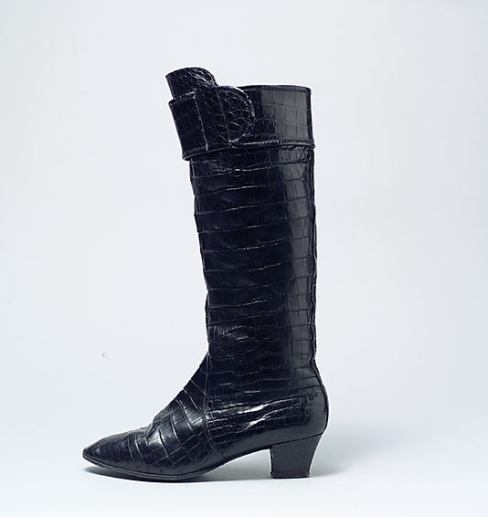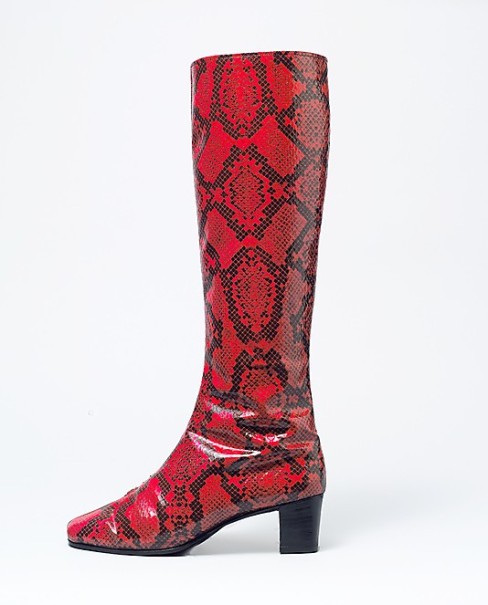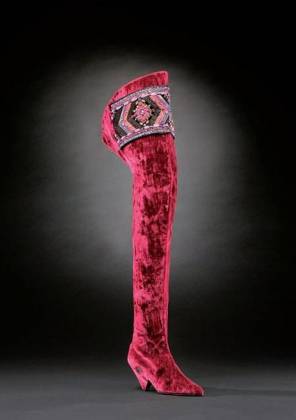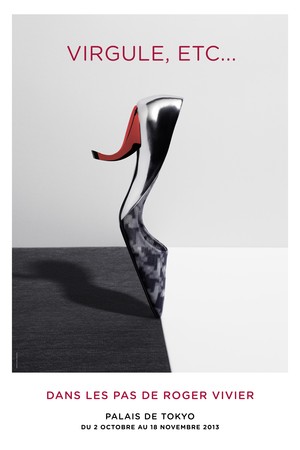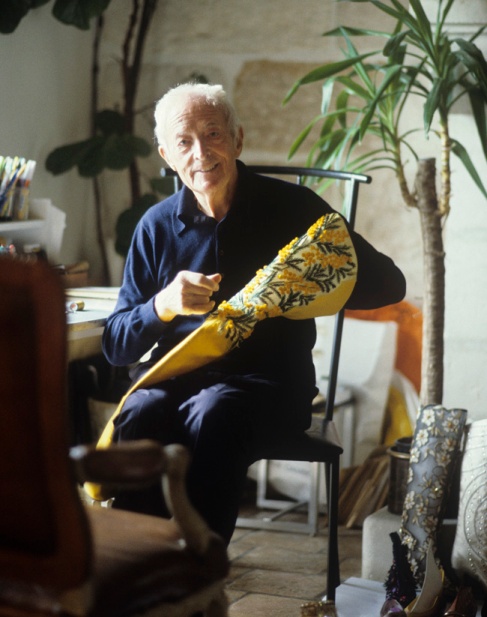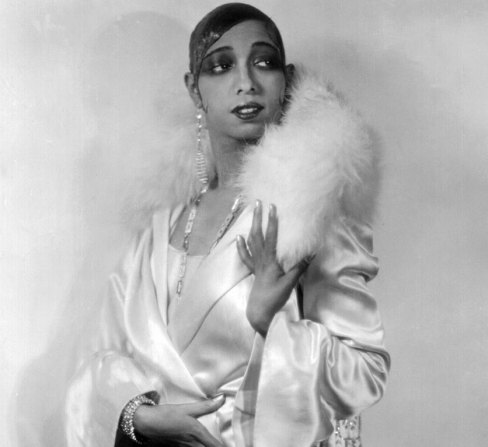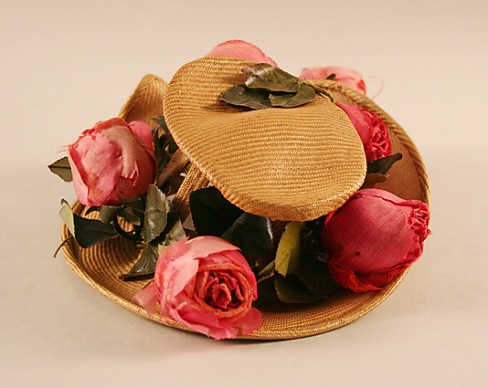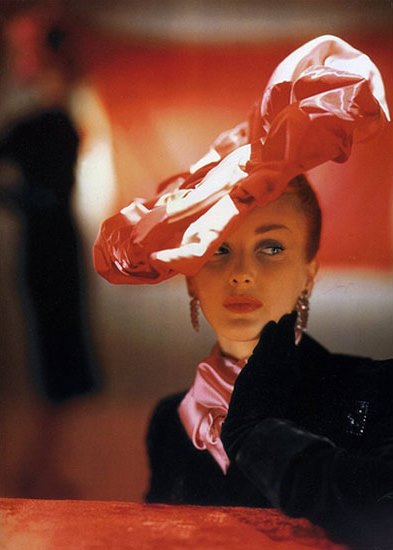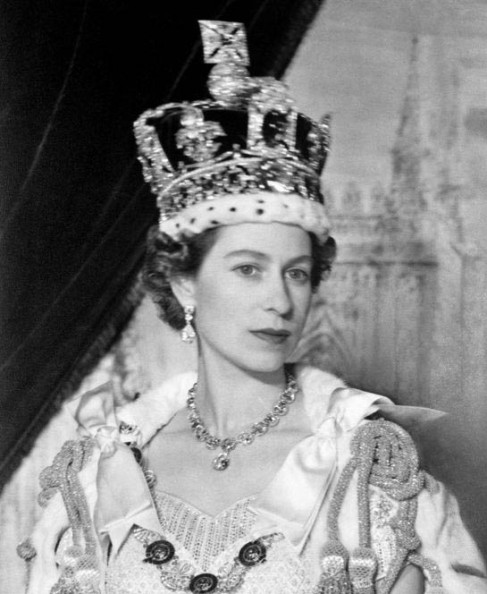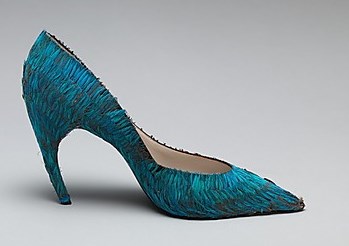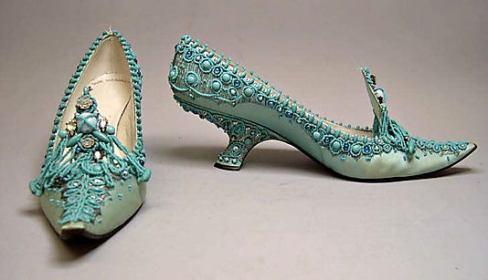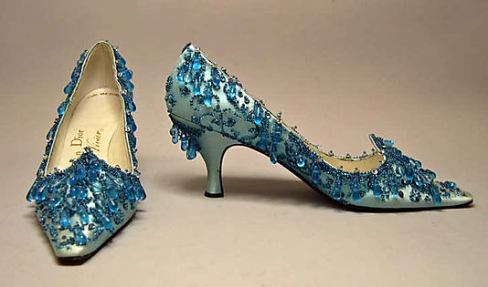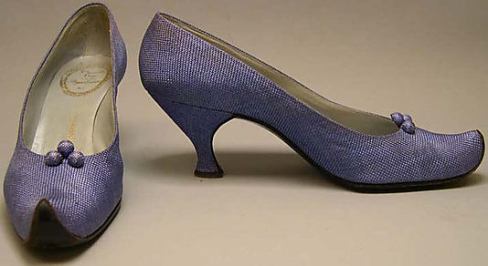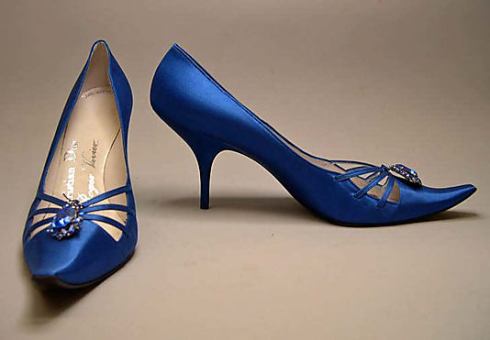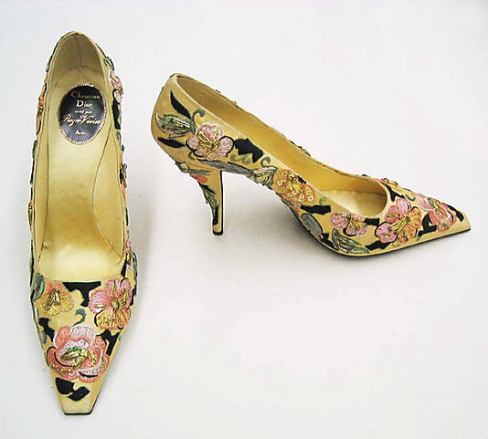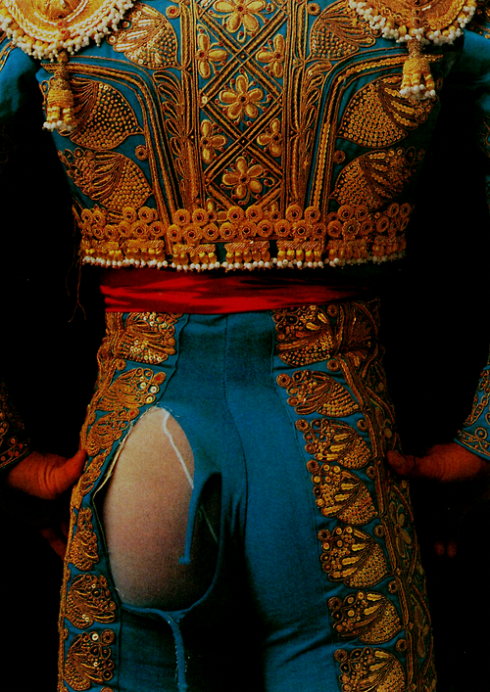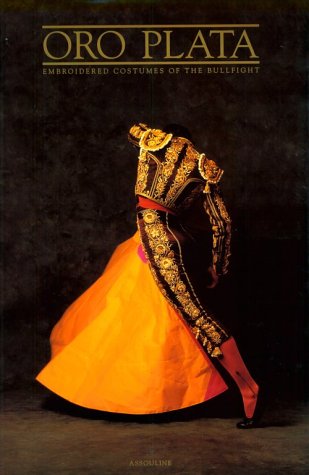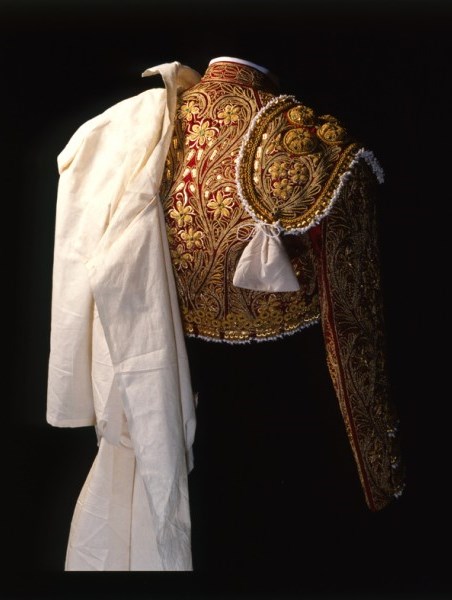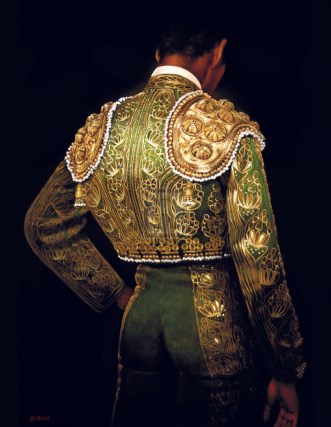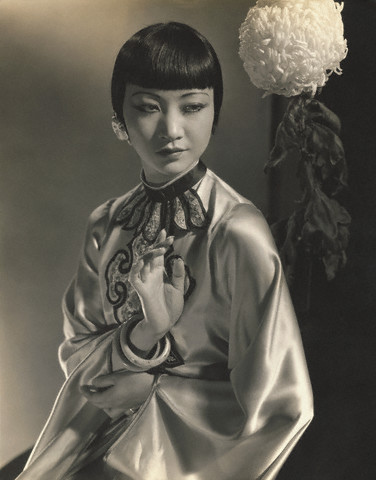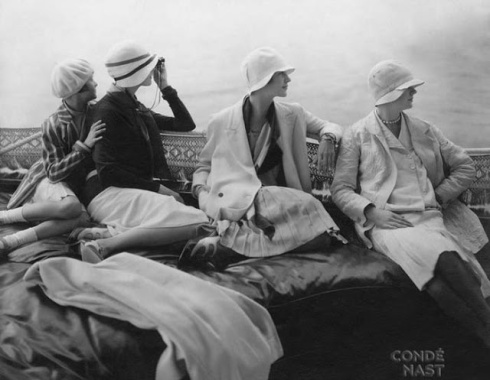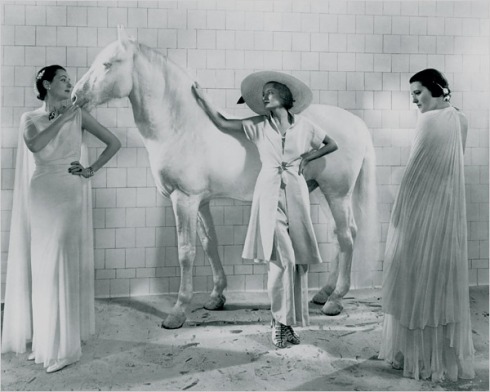Biography
After ending the collaboration with the house of Dior, Roger Vivier opens a new boutique at 24 rue François Premier, across from maison Dior. He consults with aeronautical engineers on the design of his swooping “comma” heel, that became another one of the most copied styles in footwear history.
Comma heel
.
Roger Vivier’s collaboration with Yves Saint Laurent
He also creates shoes for top designers and couturiers, like Emanuel Ungaro, André Coureges, Cristobal Balenciaga and features risqué crocodile thigh-high boots for Yves Saint Laurent, who is now designing under his own name.
Another shoe debuts in Yves Saint Laurent’s “Mondrian” collection in 1965. The design has a square heel and a pilgrim-buckle placed on the extreme tip of the shoe, unlike the seveteenthe-century version where it was positioned on the top of the foot.
In 1966 Roger Vivier designs transparent-plastic shoes and boots for Yves Saint Laurent.
Crocodile thigh-high boot
Pilgrim buckle shoe
Transparent-plastic boot
Belle de Jour
In 1967, French siren Catherine Deneuve pairs her Yves Saint Laurent wardrobe with Rogier Vivier pilgrim shoes in the movie Belle de Jour by Luis Buñuel . The movie becomes a cult hit right away and the pilgrim shoe becomes a runaway bestseller, two hundred thousand pairs are sold in one year and is the best sold modelfor Roger Vivier ever…..
‘There’s nothing like a movie that celebrates the Madonna-whore conundrum to get hearts racing and tongues wagging. Throw in English subtitles and Catherine Deneuve in various states of undress, and you have a winning cinematic equation. But while the guys were salivating over Deneuve’s sexy siren scenes, the women were likely captivated by her classic Roger Vivier pumps. Although Vivier had already established himself as a footwear master by the time Belle de Jour came out. The elegant Pilgrim pumps paired with the sleek Yves Saint Laurent wardrobe, and juxtaposed against Deneuve’s character’s sordid double life, elevated the shoes to instant cult status. But trust us when we say you can’t go wrong in a black mid-heel variety. Look what it did for Deneuve’s sex appeal.’
.
.
In 1968 Roger ads scarves and gloves to his collection and a year later Monsieur Vivier men’s department opens in the Vivier boutique, which offers made-to-measure shoes.
Among Roger Vivier’s biggest fans were Wallis Simpson, the Duchess of Windsor , who enshrined his exquisite creations in a custom closet; and the cinema femme fatale Marlene Dietrich, who haunted his boutique almost daily and was rewarded with custom black satin pumps held up by glittering rhinestone balls. Vogue’s editor, Diana Vreeland, insisted her maid polish the soles of her Viviers with rhinoceros horn. Included in her vast collection were a dozen each of his pilgrims and rock-star vinyl boots. Vreeland was among the many who regarded Vivier’s work as true art; in her 1977 Metropolitan Museum of Art Costume Institute exhibit, “Vanity Fair,” she contrasted examples of his craftsmanship with that of 18th-century artisans.
Diane Vreeland wearing Roger Vivier boots
Wallis Simpson closet with Roger Vivier shoes
.
In 1994 the 86-year-old Roger Vivier signs a new licensing agreement with Rautureau Apple Shoes, which in turn allows him to open a shop in Paris the following year. The Rautureau venture gives Vivier the backing to continue doing what he loves the most—designing shoes. Yet three years later, in October 1998, Vivier dies in Toulouse, France. He is remembered by many, including fellow shoe designer. “People try to copy him, but it’s impossible to find that mix of technical skill and design.” Kenneth Jay Lane, who has worked with the master , declares,
“He was the world’s greatest artist of shoe design.”
.
.
Random collection of Roger Vivier heels, shoes and boots

.
Roger Vivier book by Rizzoli
.
.
A gorgeous tribute to the legendary shoe and accessories designs of Roger Vivier. Master designer Roger Vivier elevated both the form and decoration of ladies’ shoes during his sixty-year career. His innate Parisian style embodied a sense of perfection and craftsmanship, and his work was coveted by style icons from Elsa Schiaparelli to Jackie Onassis. Described by Yves St. Laurent as bringing to his work a “level of charm, delicacy, refinement and poetry unsurpassed,” he created the first stiletto heel for a ready-to-wear shoe line with the house of Dior in 1955. His shoes are legendary, and the tradition of his innovative spirit continues with the revival of the house by current designer Bruno Frisoni, who has updated Vivier’s concepts, bringing his own touch to signature shapes and embellishments (including the buckle pump made famous by Catherine Deneuve in Belle du Jour). This lavish volume celebrates the history of the venerated house and charts the current evolution of the fantastic haute-couture designs that keep Roger Vivier at the top of every well-dressed woman’s list. With gorgeous new photography of the house’s collection of vintage shoes, beautifully rendered sketches, and details of the amazing accessories coming out of Roger Vivier today, this book is as chic as the shoes that fill its pages.
.
Exhibition
Virgule, etc… in the Footsteps of Roger Vivier
A RETROSPECTIVE paying tribute to the life and work of Roger Vivier is coming to Paris. The exhibition will be staged at the Palais de Tokyo in October, to coincide with Paris Fashion Week, and was curated by Olivier Saillard – director of the Musée Galliera.
The showcase is titled Virgule, etc… Dans Les Pas De Roger Vivier (Comma, etc… In The Footsteps of Roger Vivier), so named after the designer’s famous comma-shaped heels. The exhibition will take the form of “a pastiche of a museum dedicated to shoes”, explains a press release, featuring about 140 footwear designs.
The retrospective will pay tribute to the brand’s eponymous founder, who died in 1998, as well as tracking the more recent history of the footwear label. Roger Vivier was revived in 2000 by Diego Della Valle, chairman of Tod’s SpA, and Bruno Frisoni joined as creative director in 2002.
The exhibition will run from October 2 to November 18.
.
.
Special thanks to http://www.thehistorialist.com/

